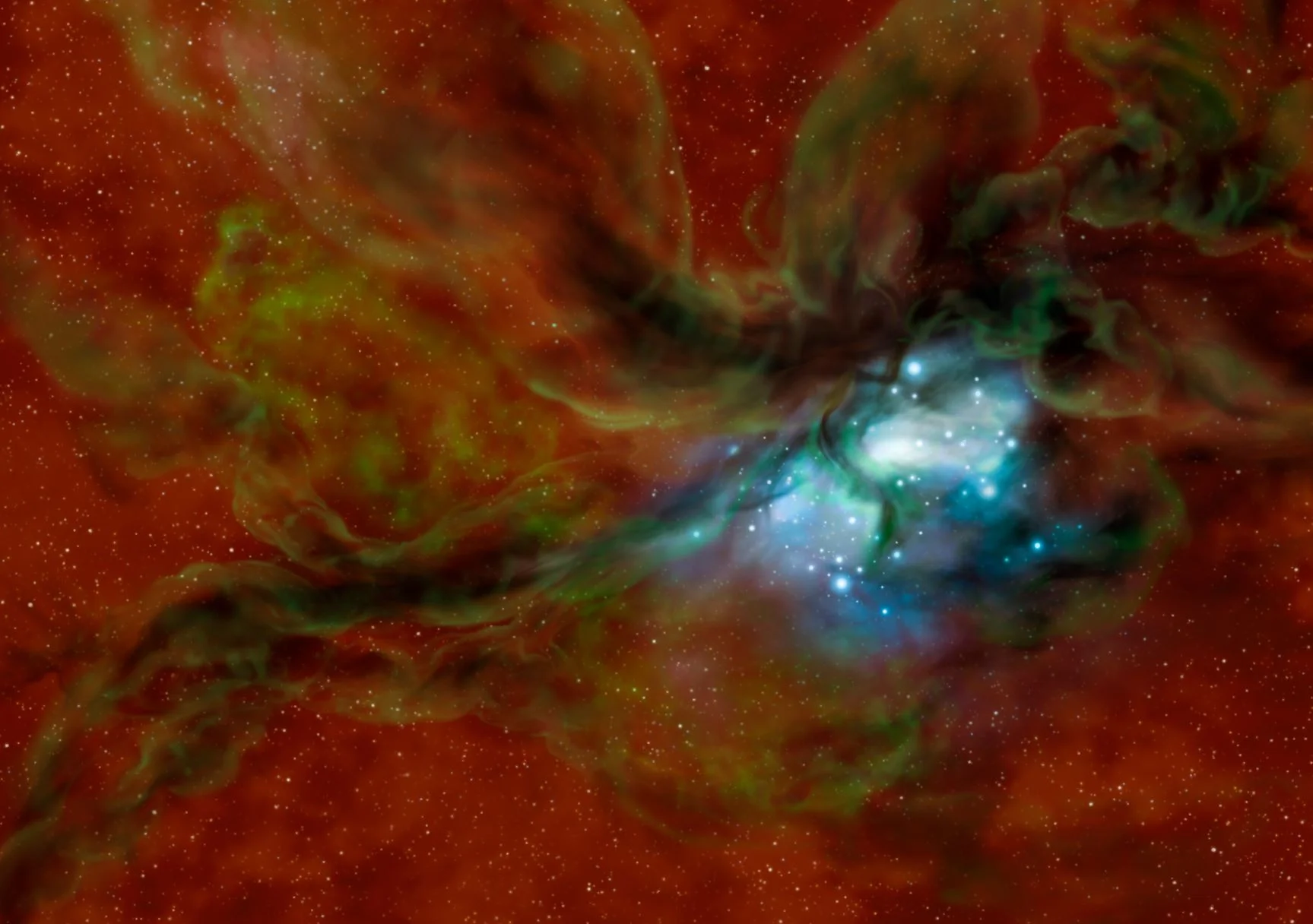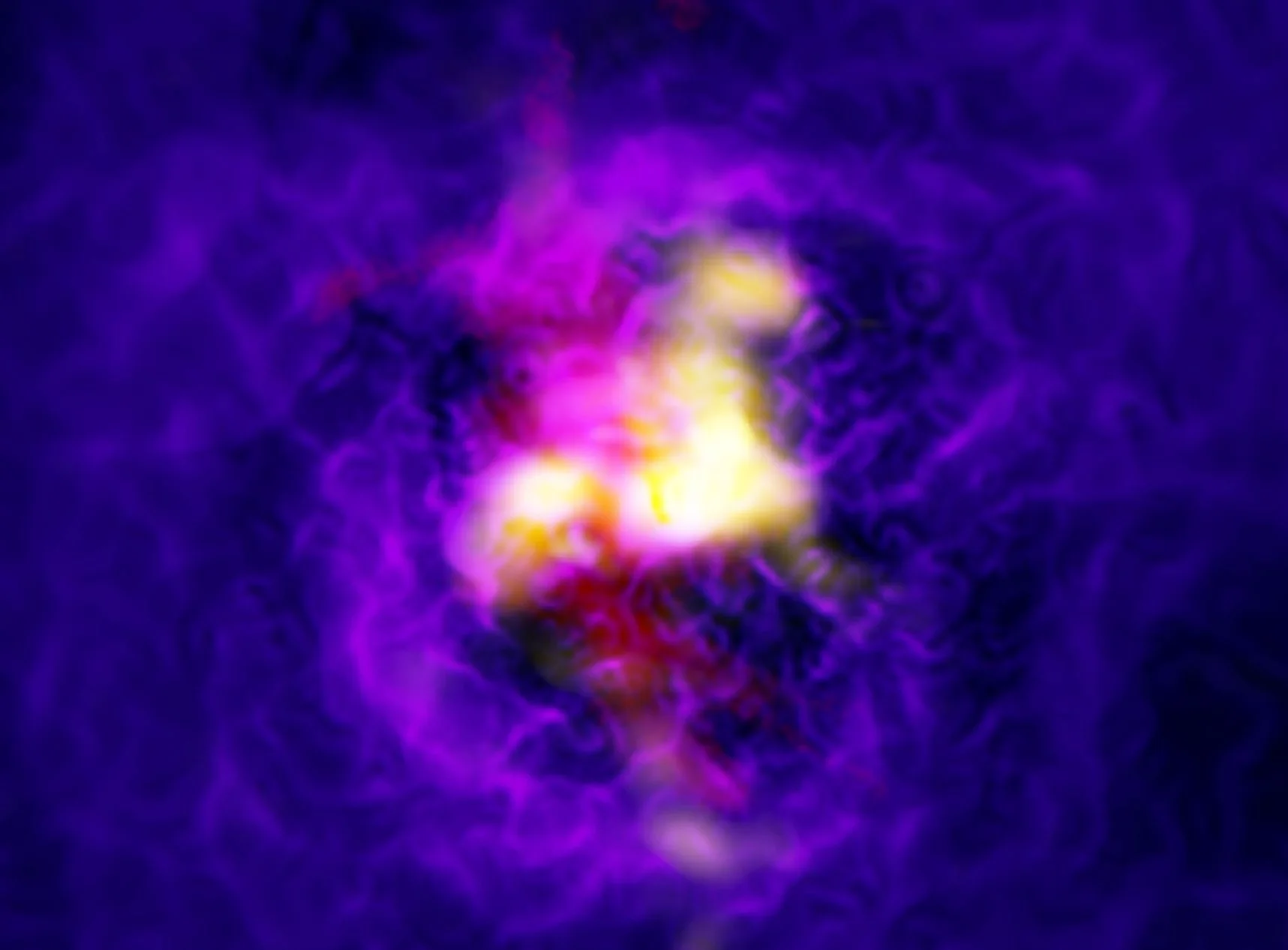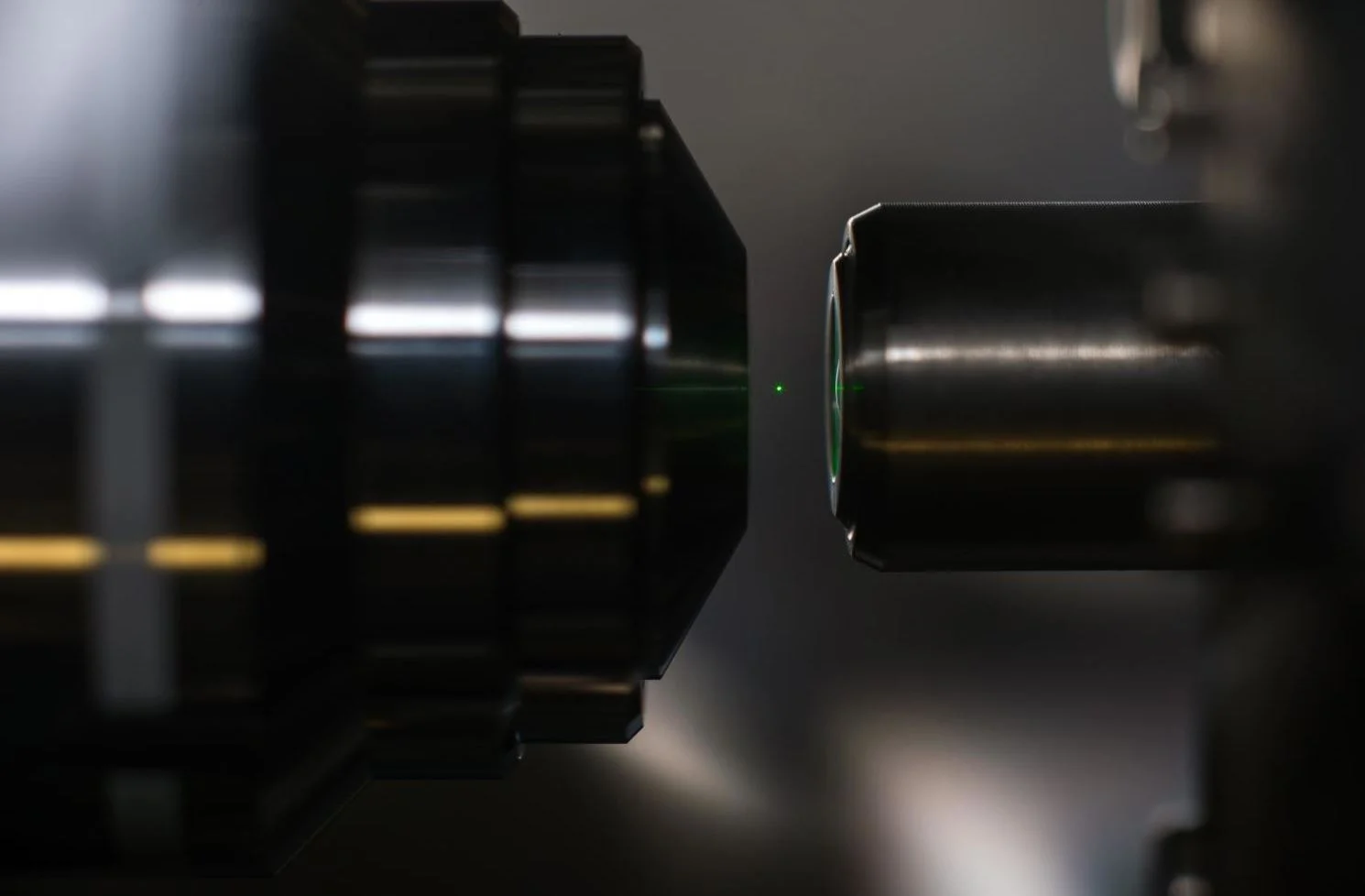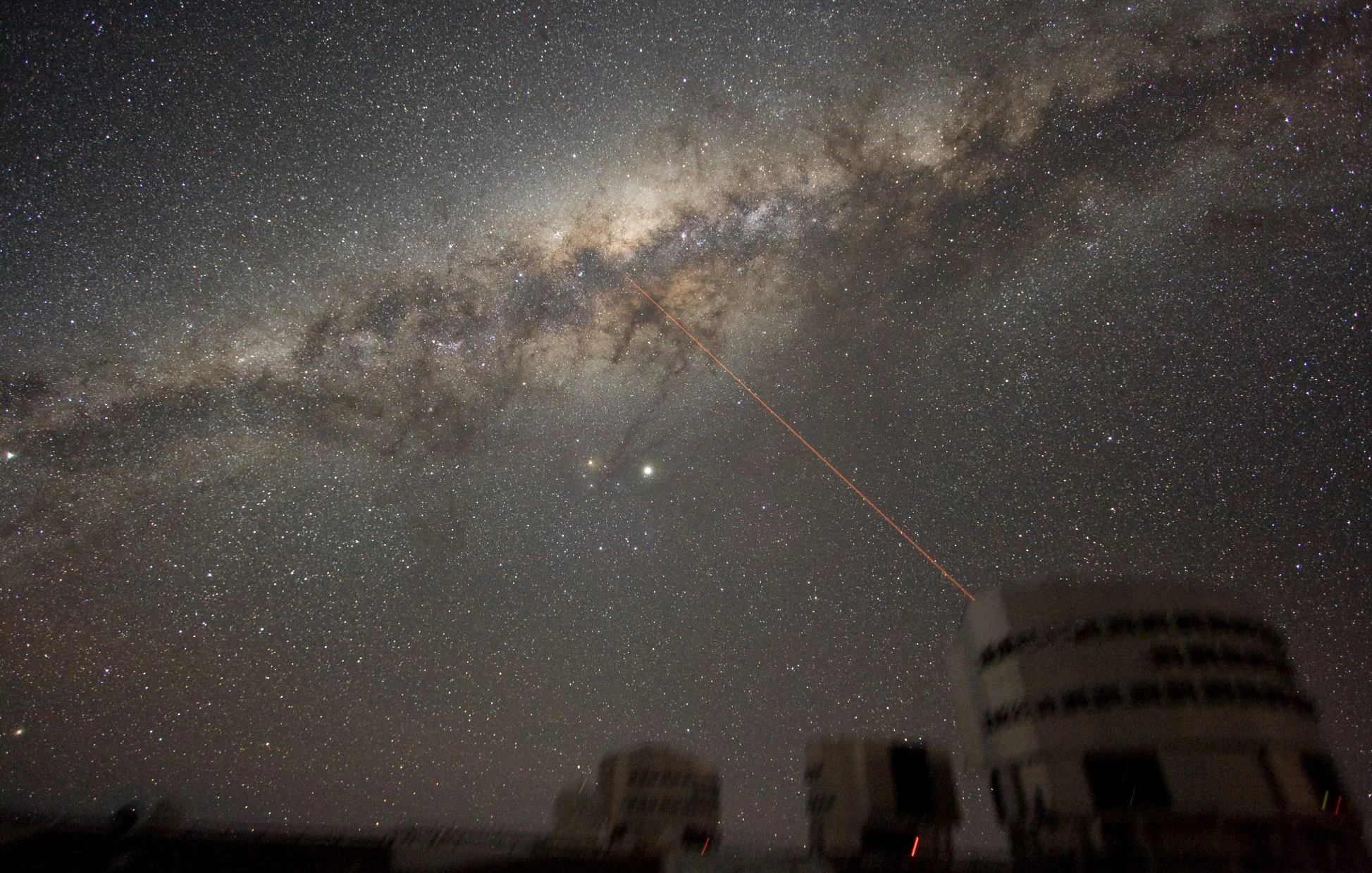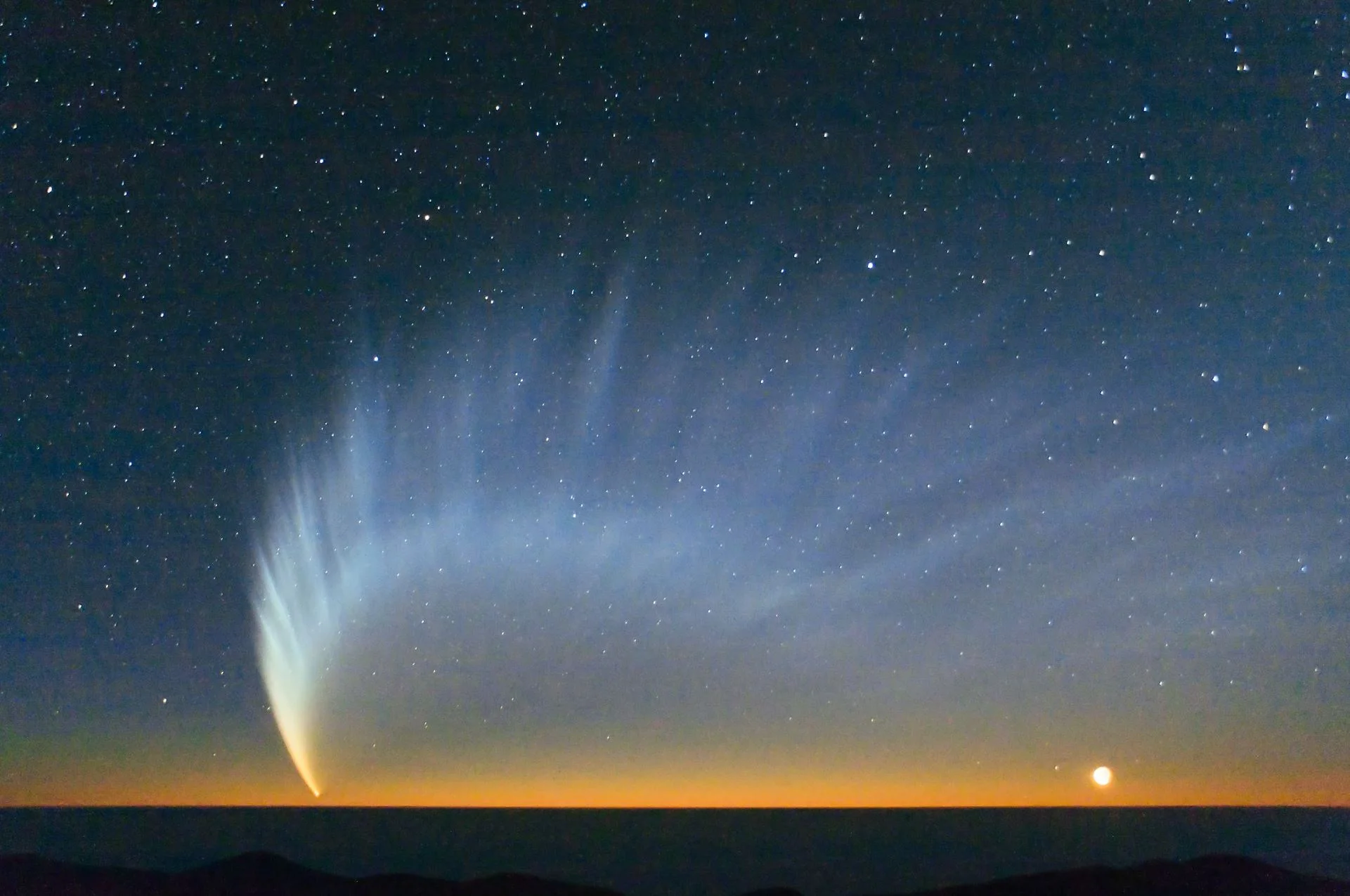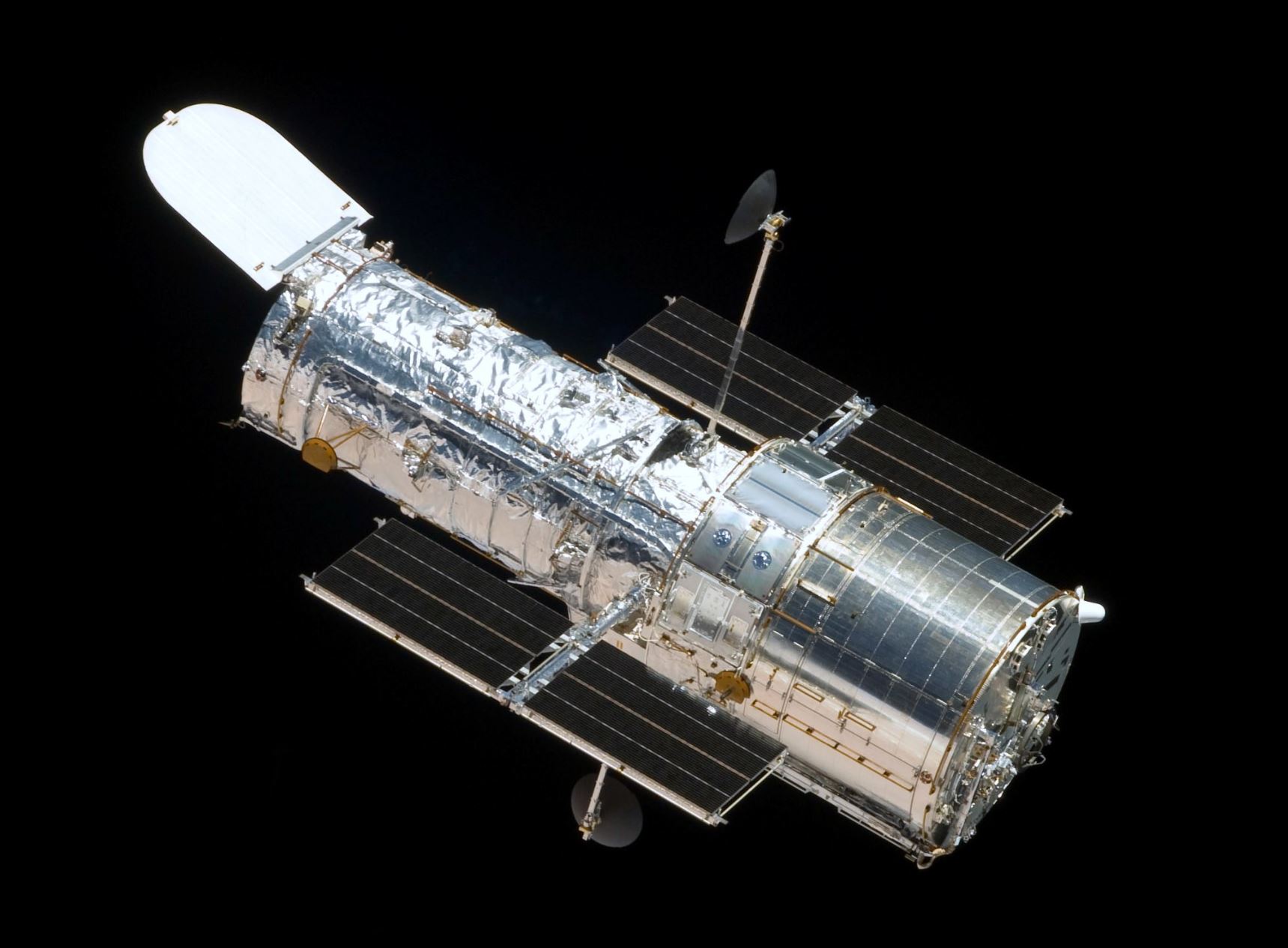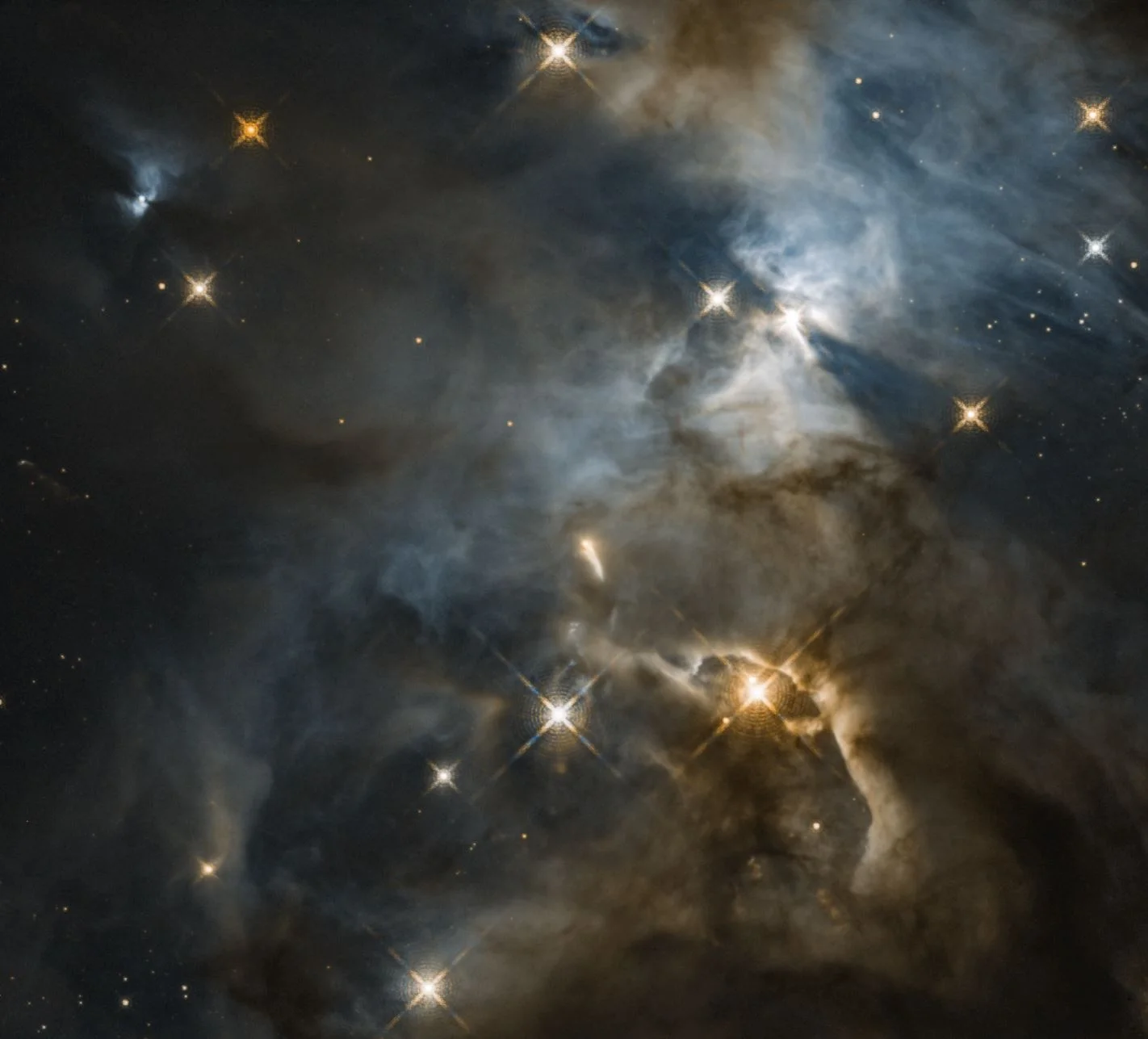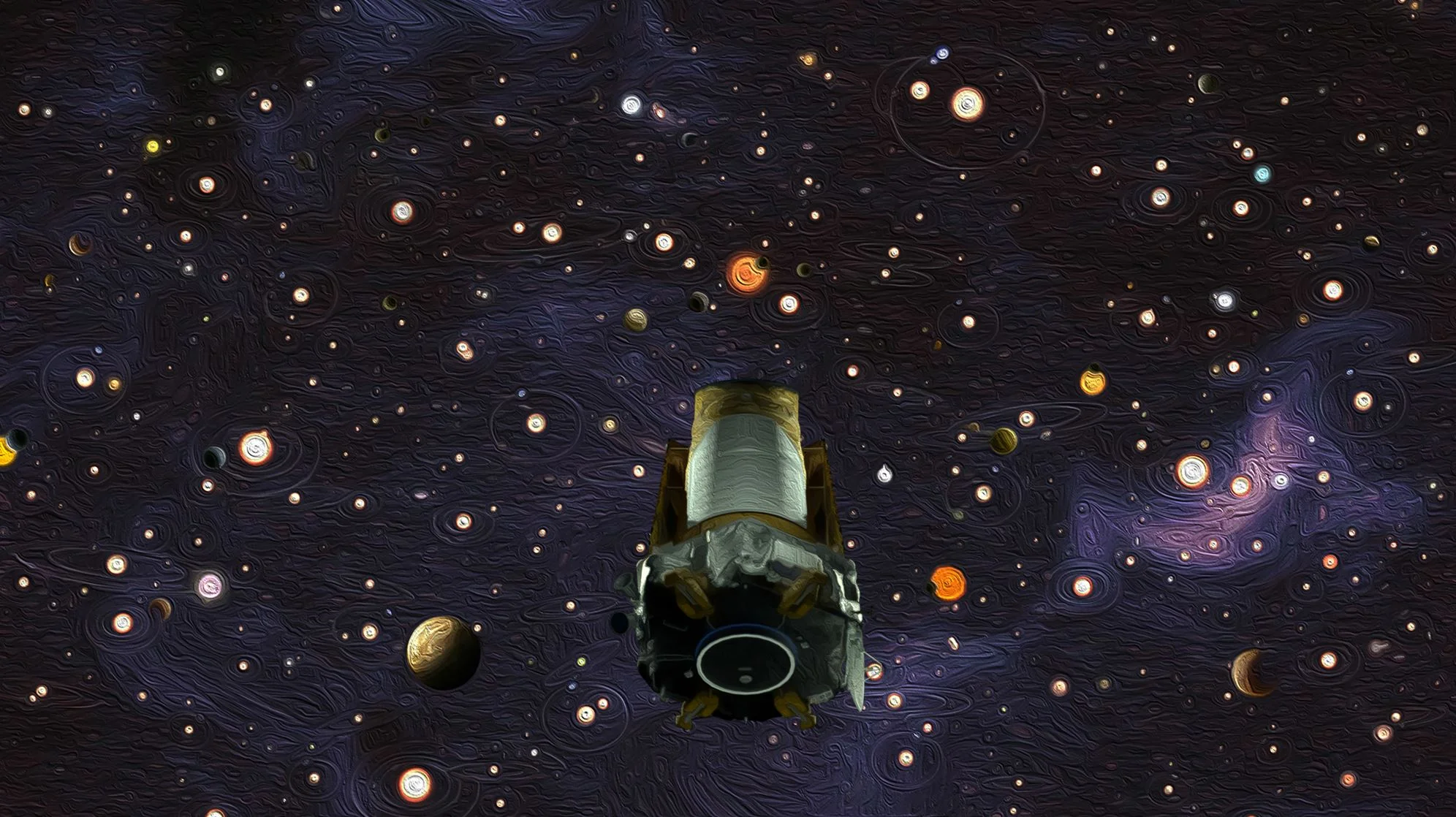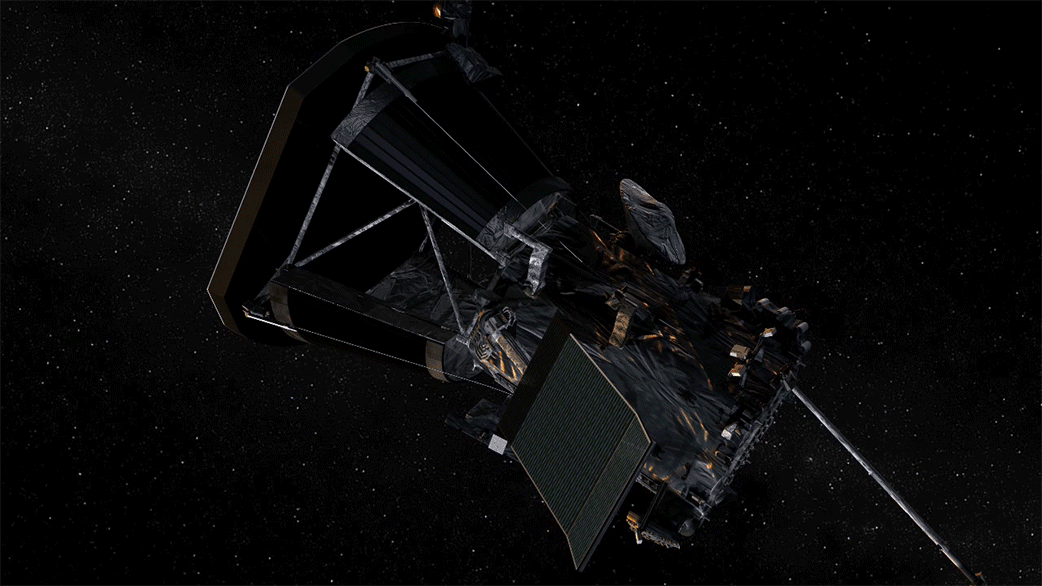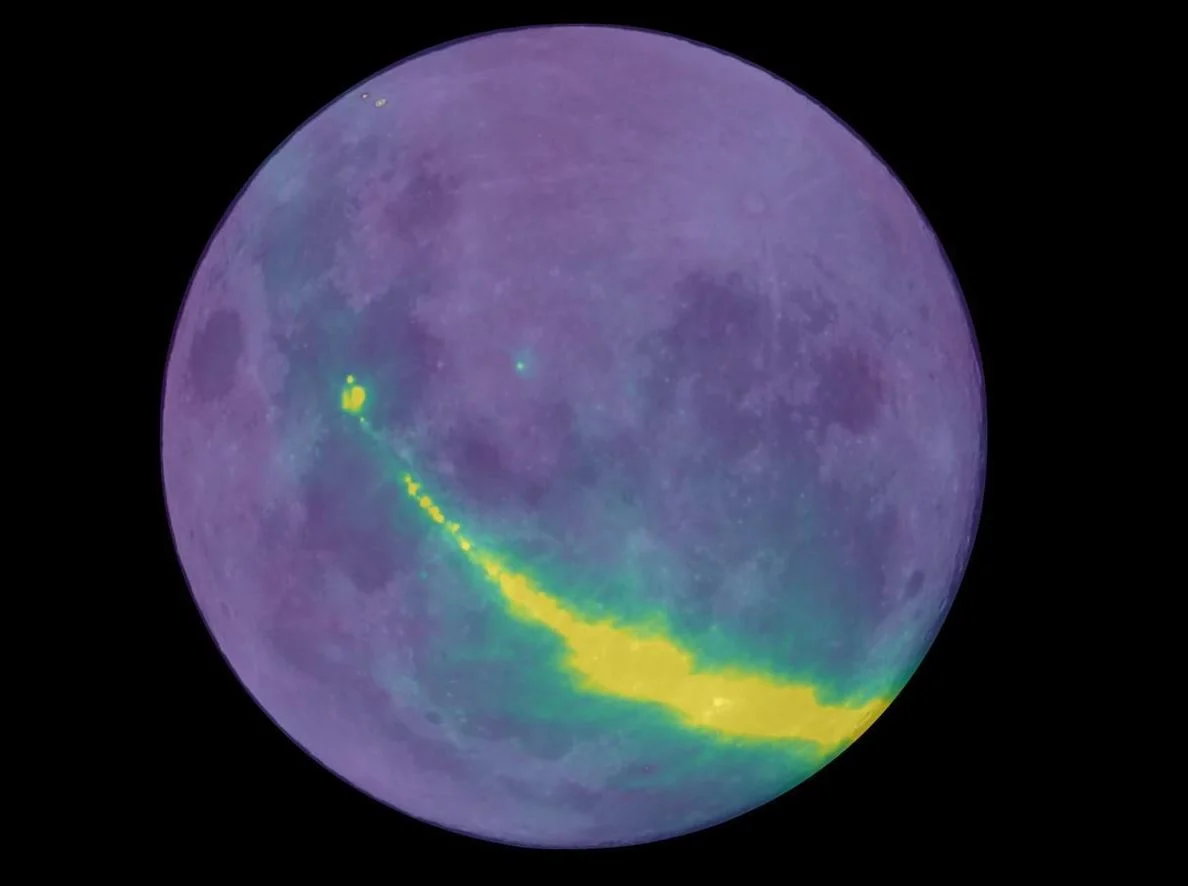According to the most widely-accepted cosmological theory, the first stars in our Universe formed roughly 150 to 1 billion years after the Big Bang. Over time, these stars began to come together to form globular clusters, which slowly coalesced to form the first galaxies – including our very own Milky Way. For some time, astronomers have held that this process began for our galaxy some 13.51 billion years ago.
Cosmic Collisions: SOFIA Unravels the Mysterious Formation of Star Clusters
Great Pyramid: how my research on ancient Egyptian poetry led to an amazing discovery
What began as an expedition to record the inscriptions of ancient Egyptian quarry workers produced a remarkable discovery about the Great Pyramid at Giza. My colleagues and I in the Anglo-French joint archaeological mission to the ancient quarry site of Hatnub recently revealed the existence of a well-preserved haulage ramp dating to the time of the Great Pyramid, roughly 4,500 years ago.
ALMA and MUSE Detect Galactic Fountain
Observations by ALMA and data from the MUSE spectrograph on ESO’s VLT have revealed a colossal fountain of molecular gas powered by a black hole in the brightest galaxy of the Abell 2597 cluster — the full galactic cycle of inflow and outflow powering this vast cosmic fountain has never before been observed in one system.
Experiments with optical tweezers race to test the laws of quantum mechanics
One might think that the optical tweezer – a focused laser beam that can trap small particles – is old hat by now. After all, the tweezer was invented by Arthur Ashkin in 1970. And he received the Nobel Prize for it this year - presumably after its main implications had been realized during the last half-century.
Could consciousness all come down to the way things vibrate?
Why is my awareness here, while yours is over there? Why is the universe split in two for each of us, into a subject and an infinity of objects? How is each of us our own center of experience, receiving information about the rest of the world out there? Why are some things conscious and others apparently not? Is a rat conscious? A gnat? A bacterium?
Dramatic galaxy collision filled the Milky Way with stars, astronomers discover
Imagine trying to map out your home town using only information you could gather from your window. Even with a pair of binoculars you’d find it a difficult task. Mapping out our own galaxy, the Milky Way, is a similarly daunting mission. Unlike other galaxies that we can view from a distance, we sit inside the Milky Way – around 26,000 light years from its center. This means that when we try to look at the opposite side of the galaxy, much of our view is blocked by the stars and dust in between.
New Insights on Comet Tails Are Blowing in the Solar Wind
Animal welfare: how to keep your pet happy during thunderstorms and fireworks
Mystery particle spotted? Discovery would require physics so weird that nobody has even thought of it
NASA Seeks Information for Gateway Cargo Delivery Services
NASA will lead the development of the Gateway, a permanent spaceship orbiting the Moon, to serve as a home base for human and robotic missions to the surface of the Moon and ultimately, Mars. The first orbiting lunar laboratory will be a temporary home and office for astronauts for up to three months at a time, with cargo deliveries likely scheduled when crew are not present.
The Mars InSight Landing Site Is Just Plain Perfect
No doubt about it, NASA explores some of the most awe-inspiring locations in our solar system and beyond. Once seen, who can forget the majesty of astronaut Jim Irwin standing before the stark beauty of the Moon's Hadley Apennine mountain range, of the Hubble Space Telescope's gorgeous "Pillars of Creation" or Cassini's magnificent mosaic of Saturn?
Most Detailed Observations of Material Orbiting close to a Black Hole
ESO’s exquisitely sensitive GRAVITY instrument has added further evidence to the long-standing assumption that a supermassive black hole lurks in the centre of the Milky Way. New observations show clumps of gas swirling around at about 30% of the speed of light on a circular orbit just outside its event horizon — the first time material has been observed orbiting close to the point of no return, and the most detailed observations yet of material orbiting this close to a black hole.
The new electric vehicle highway is a welcome gear shift, but other countries are still streets ahead
Yes! Hubble is Back in Operation
Since it was first launched into space in 1990, the Hubble Space Telescope has become something of a household name. Over the course of its almost thirty years of service, Hubble has established a reputation as one of NASA’s Great Observatories, giving astronomers the ability to look farther into the cosmic field than ever before and learn new and fascinating things about our Universe.
Hubble Reveals a Giant Cosmic 'Bat Shadow'
Shadows on Earth can be mysterious and foreboding, but when they occur in space, they can convey information we otherwise could not know. In a stellar nursery called the Serpens Nebula, nearly 1,300 light-years away, a young star's game of shadow play is revealing secrets of its unseen planet-forming disk. The near-infrared vision of NASA's Hubble Space Telescope captured the shadow cast by the fledgling star's brilliant light being blocked by this disk.
The search for the source of a mysterious fast radio burst comes relatively close to home
NASA Retires Kepler Space Telescope, Passes Planet-Hunting Torch
After nine years in deep space collecting data that indicate our sky to be filled with billions of hidden planets – more planets even than stars – NASA’s Kepler space telescope has run out of fuel needed for further science operations. NASA has decided to retire the spacecraft within its current, safe orbit, away from Earth. Kepler leaves a legacy of more than 2,600 planet discoveries from outside our solar system, many of which could be promising places for life.
Parker Solar Probe Breaks Record, Becomes Closest Spacecraft to Sun
Whoa. That’s the Milky Way, Bouncing off the Moon in Radio Waves
The universe wasn’t always such a well-lit place. It had its own Dark Ages, back in the days before stars and galaxies formed. One of the big questions in astronomy concerns how stars and galaxies shaped the very early days of the Universe. The problem is, there’s no visible light travelling through the Universe from this time period.

